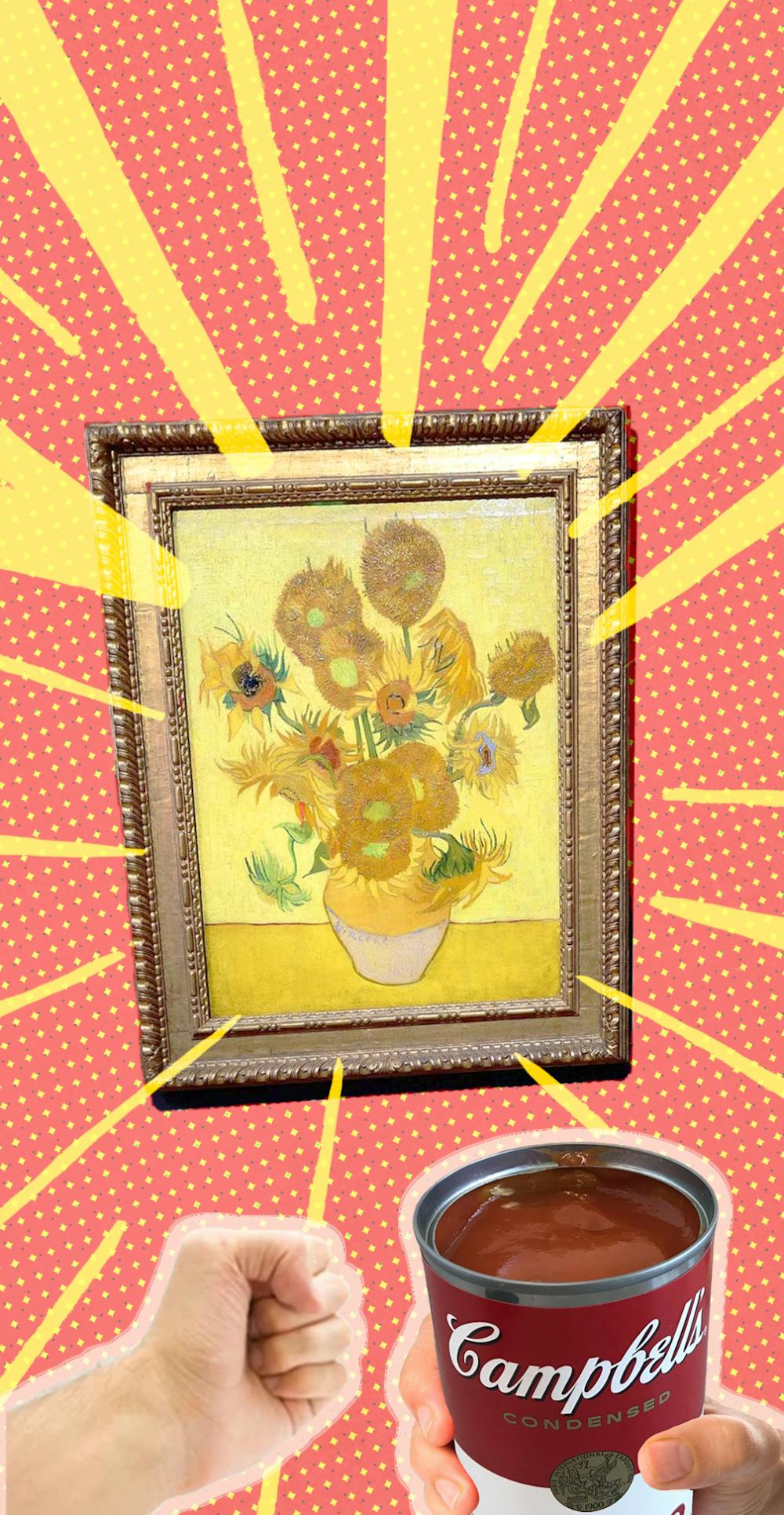If you have any form of social media, you’ve probably seen the photo of Vincent Van Gogh’s “Sunflowers” painting covered in tomato soup, with two young adults beneath it, their hands glued to the wall.
Their shirts read “Just Stop Oil.” You probably scratched your head, wondering what Van Gogh did to warrant food being splattered on his artwork.
You weren’t alone in the confusion.
The protestors are members of Just Stop Oil, a coalition of groups striving to end the use and production of eco-unfriendly fossil fuels in the UK. The group has been the subject of extensive media coverage following their Oct. 14 protest.
The pair defended their tactic for protesting climate change by asking, “What’s more important, art or life? Are you more concerned about the protection of a painting or the protection of our planet and people?”
Yet the recent string of protests, which have targeted works by Picasso, Vermeer, Monet and more, have divided environmentalists and art lovers alike, with some arguing for the necessity of radical action and others viewing them as diverting from the real goals of the movement.
Alexandria Coffman, a Miami University senior sustainability co-major and president of EcoReps, said she doesn’t think the protests were effective due to their divisive nature.
“It was unfortunate to see that the environmental movement was pitted against other groups of people, such as lovers of art and those who appreciate the paintings,” Coffman said. “I think it’s very possible to bring attention to environmental action while also having respect for the [paintings] and the museums that house them.”
Coffman said that while the protests have garnered large amounts of publicity, they have failed to start conversations about climate action.
“Most of the coverage that I’ve seen has been primarily focused on the soup or the painting as opposed to the environmental movement,” Coffman said. “So while it’s gotten more coverage, I don’t think it’s something that is a good way to bring attention to the real [environmental] issues.”
Jack Green, director of Miami’s art museum, said he appreciates the protestors targeting artworks covered in glass to prevent damage.
Enjoy what you're reading?
Signup for our newsletter
“It was about raising awareness of this major issue that’s facing all of us in the world,” Green said. “But also trying to do it in a way that the protesters believe would not harm the artwork in the long term.”
Green said he sees both the protestors’ and critics’ sides of the issue.
“We should be protecting our environment, but we also should be protecting our cultural heritages as well, and that includes artwork and museums,” Green said. “I wouldn’t recommend it, but at the same time, I have mixed feelings about it.”
Ryan Rosu, a junior English literature major and president of Zero Waste Oxford, said he agrees with the reasons behind the protests but not with their methods.
“To me, the main thing is, why are you attacking art?” Rosu said. “Art is the strongest message for change and ideals. It’d be better to lock yourself to the door of Exxon Mobil or something that’s tangible as a force against the environment rather than art.”
Andrew Casper, an associate professor of art history, also said he supports the group’s cause, but wishes they’d been more clear about why they chose their tactic. While their message about the hypocrisy of caring more for cultural artifacts than the earth was valid, he said, it wasn’t clear in its execution.
The way the event was covered in the news also muddied the message, Casper said.
“It gets sensationalized in media coverage as these people just throwing food at paintings,” Casper said. “And I don’t really think that’s going to start the conversation they want.”
Casper said the negative publicity around the protests may weaken the power of art to catalyze environmental efforts. He suggested using art as an opportunity to start conversations about the climate through forums and exhibitions.
Green said Miami’s art museum is currently planning programs and exhibitions with environmental themes for next year. Many contemporary artists have also made pieces that show the impact of climate change.
In response to the protesters’ “art or life” question, Rosu said there shouldn’t have to be a choice.
“Art and environmentalism are not opposites,” Rosu said. “What is life without art?”




